Turning waste into profit
A recent project Feasibility of feedlot manure and effluent value adding technologies and strategies, examined potential technologies and strategies to enable value-adding to feedlot manure, and feedlot and truck effluent.
Senior Soil Scientist Agri-Science Queensland Dr Sheikh Rabbi led the project and explained the need for further topic exploration.
“In Australia, we consume lots of beef. To produce that beef, we raise cattle and a part of that process is the generation of waste in terms of manure and effluent.”
Both forms of waste hold valuable nutrients, including nitrogen, phosphorus and potassium. The project focused on how the nutrients can be captured and whether there is an option to value-add so they can be used for another purpose, such as for crop growth and energy generation.
“Currently the majority is used directly in broadacre agriculture.” Dr Rabbi added.
Eugene McGahan was involved in the project as part of Integrity Ag. He discussed how little has been done in the space for the last 10–15 years and the potential positive opportunities.
“There hasn’t been a lot of development in terms of value adding-research for manure and effluent in recent times. There’s been big improvements in pad management etc at feedlots, but there is still a lot of soil contamination.
Eugene added, “With survey participants recording an average of 1.8 tonnes of manure harvested per standard cattle unit, there is a real opportunity to establish value-adding to increase profitability.”
What is nutrient capture?Maximising nutrient capture is crucial to the value-adding process. Animal waste, either manure or effluent, has many nutrients – nitrogen is one example. As soon as the animal releases waste, nitrogen will be lost. “Nutrient capture means we want to minimise the loss of nutrients, such as nitrogen, collected from the pen and either put it in a stockpile or compost it. “After the waste leaves the animal more than 60% (in some cases 95%) of the nitrogen that’s in the manure can be lost. That is a lot of potential nutrients that can be providing value.” Dr Rabbi said. Maximising nutrient capture will ensure waste can be a high-quality, profitable product. |
The three project objectives
The project worked on three objectives:
- Establish a baseline volume of waste generated by feedlots and identify current in-place processes. This was achieved through an Australian-wide survey of feedlots, as well as product end-users.
- A desktop study of current techniques to increase nutrient capture used across the world.
- Create a shortlist of technologies easily transferrable to the Australian feedlot environment.
Senior Principal Soil Chemist/Geochemist Agri-Science Queensland Matthew Redding was a project co-lead and explained some of the questions used to guide the research.
“We were asking questions like ‘Can we use it more efficiently?’ ‘Can we get more value out of it’? It differs quite a lot from conventional fertilisers - it contains a lot of carbon - and we wanted to see what people were currently doing to derive better value out of that,” Matthew said.
The findings of the report identified key barriers to further adoption were driven by product cost and consistency. It also found that end users value manure and effluent products, when compared to synthetic fertiliser, based on their macronutrient value.
“People know there is value in the waste. However, currently it isn’t a process to turn the waste into fertiliser,” Eugene said.
“When speaking to feedlots during the research process, it’s about 60 cents per tonne they are losing when turning the waste into fertiliser. Running at a loss makes it not so valuable. The real question is how can we maximise value so it’s not a loss?”
The research found the most promising technologies to be co-composting, composting and pelletising of manure to formulate hybrid fertiliser. These are some of the best options in terms of physical stability, nutrient value and performance in soil.
The project also found that manure products continue to be undervalued but that an emerging opportunity could arise from a renewed building soil carbon focus.
What is next?
Future recommendations suggested research into the development of best practice pen cleaning and maintenance guidance should be undertaken. This will reduce contamination of feedlot manure and improve the consistency and value of final products. Additional recommendations include:
- further research to map nutrient demand against organic nutrient availability, assisting in strengthening opportunities to market manure products
- shortening manure stockpiling/composting time to help value-add
- research into transforming composted manure (pelletised and un-pelletised) into high-efficiency hybrid fertiliser for broadacre and horticultural cropping systems.



